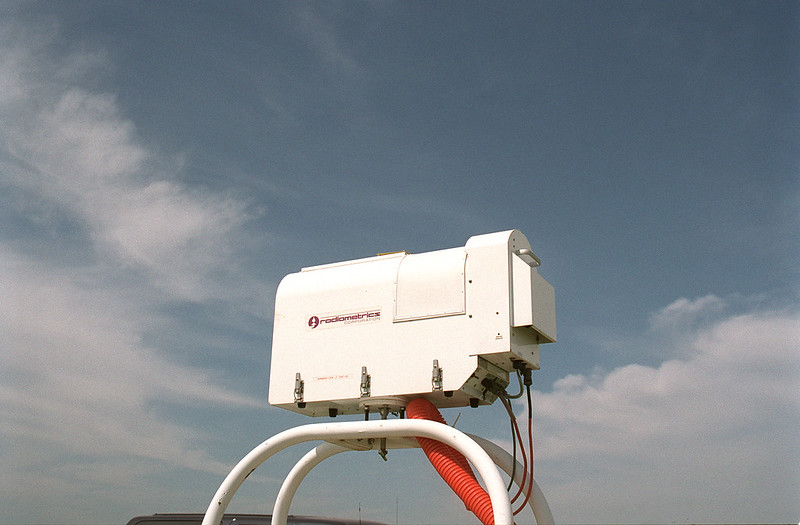Updated Microwave Radiometer Retrieval Product Available for MOSAiC
Published: 18 February 2022

New files from the Microwave Radiometer Retrievals value-added product (MWRRET VAP) are now available for the Multidisciplinary Drifting Observatory for the Study of Arctic Climate (MOSAiC) expedition. This release is more complete than the data set announced by the Atmospheric Radiation Measurement (ARM) user facility in March 2021 because additional microwave radiometer data became available to fill in previous gaps.
In addition, the entire MOSAiC MWRRET data set has been reprocessed because of updates to the static and variable brightness temperature offsets. The data cover the period from October 11, 2019, through October 1, 2020, on the icebreaker R/V Polarstern.
MWRRET retrieves column precipitable water vapor and liquid water path—both important variables to understanding radiative transfer in the atmosphere and clouds—from ARM’s 2-channel microwave radiometers (23.8 and 31.4 GHz). The VAP uses a physical retrieval methodology that provides improved retrievals over the standard statistical coefficient method.
MWRRET data from MOSAiC are available as c2-level files. During c2 processing, improved offsets are applied to the 23.8 GHz channel, improving the precipitable water vapor retrievals. In addition, this stage uses cloud vertical extent information from the Active Remote Sensing of CLouds (ARSCL) VAP to get a more accurate temperature of the liquid water layers in the atmosphere.
More information on MWRRET can be found on the VAP web page. Feedback on the VAP can be sent to ARM translator Damao Zhang.
Access the data in the ARM Data Center. (Go here to request an account to download the data.)
To cite the MWRRET data, please use doi:10.5439/1027369.
Keep up with the Atmospheric Observer
Updates on ARM news, events, and opportunities delivered to your inbox
ARM User Profile
ARM welcomes users from all institutions and nations. A free ARM user account is needed to access ARM data.


















